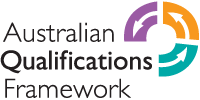CLET RPL is Helping Military and Police Transition with Conf...
This unit describes the skills and knowledge required to lead the management of work health and safety (WHS) risks in an organisation. The unit includes facilitating the identification of hazards and potential hazards, leading the assessment of associated risks, selecting and implementing suitable risk controls, and evaluating the overall effectiveness of the organisational WHS risk management process. It involves communicating with stakeholders throughout the process.
The unit applies to those in an organisation who provide specialised knowledge and guidance to a range of personnel when leading the management of WHS risks.
NOTES
1. The terms ‘occupational health and safety’ (OHS) and ‘work health and safety’ (WHS) are equivalent, and generally either can be used in the workplace. In jurisdictions where model WHS laws have not been implemented, registered training organisations (RTOs) are advised to contextualise this unit of competency by referring to existing WHS legislative requirements.
2. The model WHS laws include the model WHS Act, model WHS Regulations and model WHS Codes of Practice. See Safe Work Australia for further information.
No licensing, legislative, regulatory or certification requirements apply to this unit at the time of publication.





